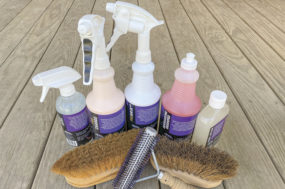These hazards vary depending on the type of equipment, such as a tractor, forklift or sprayer. They also vary depending on the work environment and work conditions, such as working in the field or in a building.
It is very important to identify the specific hazards associated with the equipment you are operating and the area you are working in. Examples of hazards likely to be present when operating equipment include the risk of collision with pedestrians, other equipment or other objects, as well as the risk of injury from moving parts if performing maintenance on equipment.
Pre-use inspection
All equipment must be inspected before each use. The operator must review each component of the equipment to ensure there is no damage or wear that will affect the operation. Check the fluid levels and lubrication, tire pressure, operating controls and overall condition of the equipment. Ensure safety devices and guards are in place, and lights, horns and other components of the equipment are working.
Report any defect to your supervisor and do not use any equipment that is damaged or defective. If equipment is damaged, you must remove the key and clearly mark the equipment as out of service and ensure repairs are made before the next use.
You must also assess the area you will be working in before you begin work, look for uneven or unstable ground, collision hazards, adequate lighting and other factors that may affect operation of the equipment.
Safe equipment operation
Below are 10 safety precautions to be followed when operating motorized equipment. By following these tips, we aim to ensure the safety of the equipment operator as well as others in the work area.
1. All operators must receive training for the specific equipment being used. This training must include a hands-on component as well as an evaluation of the operator’s competency before they are allowed to operate the equipment on their own.
2. Read and follow all safety decals and safety instructions located on the equipment, and only use equipment for its intended purpose.
3. Ensure you have clear visibility of the area around you at all times. Look in the direction of travel and use a spotter when necessary.
4. Keep bystanders and other equipment out of the equipment operating area whenever possible. Do not allow pedestrians to work or walk near equipment being operated.
5. Wear your seatbelt and do not disable or remove any safety devices such as guards or automatic shut-offs and audible alarms.
6. Ensure equipment is maintained in good condition and do not modify equipment unless you have assessed the modifications to ensure the equipment can still be safely operated.
7. Drive to suit your load and conditions. Adjust your speed, avoid uneven ground, keep loads low, and be aware of the dimension of the equipment and load.
8. Only use attachments or implements appropriate for the equipment, and ensure they are properly hitched and secured with primary and secondary securement devices.
9. Use three-point contact when getting on and off equipment and ensure the equipment and your footwear are clear of mud, water or other slip and trip hazards.
10. When you have completed the operation, park on even ground, disengage the PTO, if being used, lower any attachments to the ground, apply the parking brake, turn off the engine, and remove the keys.
Maintenance safety
All equipment must be inspected on a regular basis and maintained in good working condition. Regular maintenance should be performed to reduce the risk of emergency maintenance. Annual inspections must be completed and documented for all equipment.
Anyone performing maintenance must be trained and competent for the task they will be completing. Any major repairs must be made by a qualified mechanic or other competent person.
When performing maintenance, you must:
- Always wear appropriate personal protective equipment such as gloves, eye protection and other protective clothing.
- Ensure all parts of the equipment and attachments are turned off and have stopped moving before going near the equipment or attachments.
- Follow the lock-out, tag-out process. Remove the key and lock out any sources of energy to the equipment or attachments such as the engine or hydraulics. Do not perform any type of maintenance or repair to equipment that has not been de-energized and locked out.
- Ensure raised parts of the equipment are blocked from falling and wheels are chocked. Use cylinder locks for all raised hydraulic parts.
- Wait until parts are cooled before performing maintenance such as changing hydraulic or engine oil, repairing hoses, replacing parts or oiling chains. Dispose of used oil and other fluids properly.
Driving equipment on the road
Additional precautions are needed when operating equipment on the road. Ensure all operators are trained and know the hazards of operating on the road. Ensure operators follow these guidelines:
- Operators must be over the age of 16 and be trained and competent to drive on the road.
- Every farm tractor or self-propelled implement on a highway must display slow-moving vehicle (SMV) sign. SMV signs should be centered on the rear of the rearmost vehicle, 0.6 to 2 metres (2 to 6 feet) above the road.
- Wear your seatbelt and do not use any handheld devices.
- Be aware of your surroundings and the limitations of your equipment. Watch for pedestrians, bikes, other vehicles, overhead lines, bridges, narrow roads, sharp turns and steep hills.
- Avoid uneven road, soft shoulders and embankments; allow traffic to pass when safe to do so.
- Drive the appropriate speed for your load and the conditions, and clearly indicate all turns.
- Keep attachments in the lowest, most narrow positions, and keep loads low to the ground.
- Use tie-downs or other means of securing your load. Watch for falling debris, mud or rocks.
- Use two separate means of attachment or locking devices for all implements or other attachments.

Cheryl DeCooman, CHRL, can also be reached at (519) 532-2508 or on Twitter and Instagram.
References omitted but are available upon request. Click here to email an editor.









